The long-running legal dispute between Apple and Epic Games finally reached a conclusion last Wednesday when Judge Yvonne Gonzalez Rogers ruled that Apple is no longer able to:
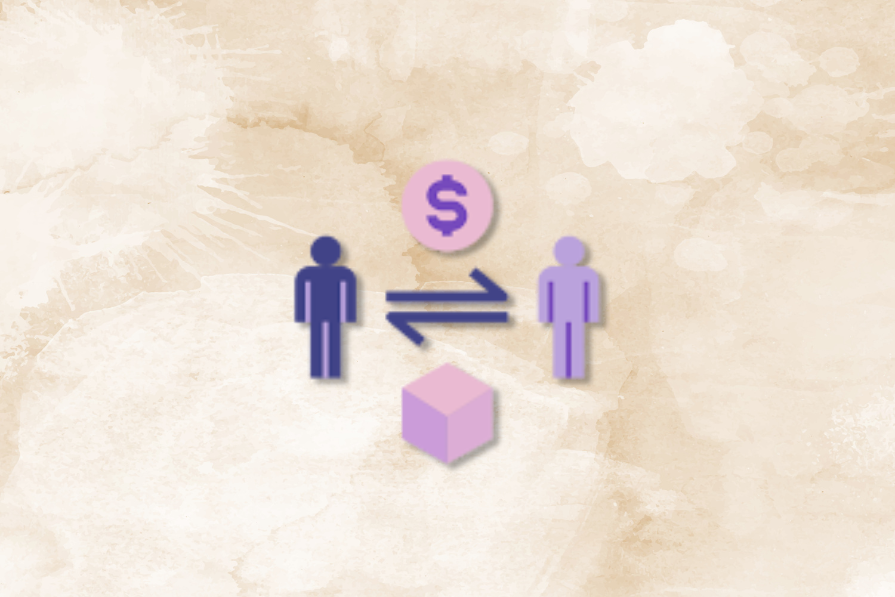
From now on, app developers can avoid the 30 percent cut Apple takes from most transactions and opt to process payments on their own.
This is a big change that’ll impact both mobile product managers and consumers.
To help you better understand the impact of this dispute, let’s take a look at how we got to where we are today.
Epic Games, the creator of the viral game Fortnite, released a new app update that intentionally violated Apple’s and Google’s store policies, which forced app developers to use in-store payment processing options (that pocket up to a 30 percent commission).
Even more than that, Epic Games encouraged users to use the external payment method by offering them a discount.
This caused Apple and Google to quickly remove Fortnite from app stores. However, this was a planned and intended provocation by Epic Games. On the same day, it filed a lawsuit against Apple on 10 counts:
The Federal Court ruled in favor of Apple on nine out of ten counts. However, it ruled in favor of Epic Games on:
Neither Apple nor Epic Games was fully satisfied with the ruling, so both parties filed appeals.
After years of further legal conflict, the Court of Appeals validated the original outcome, favoring Apple on most counts but claiming that Apple did indeed violate California law.
Both parties filed further appeals to the Supreme Court.
The Supreme Court declined to hear the further appeal, validating previous rulings.
The first legal dispute ended and forced Apple to update its App Store terms, allowing developers to add third-party payment methods to their apps.
However, not only did adding an alternative payment method require additional permission, but Apple still claimed a 27 percent commission on any transactions made, even outside the app store.
Epic Games didn’t like the fact that Apple still claimed a commission on the transactions. It claimed that Apple didn’t fully respect the Court decision and broke further laws.
The lawsuit was met with strong support from big tech companies such as Meta, Microsoft, and X.
After investigating this topic, Judge Yvonne Gonzalez Rogers ruled that Apple intentionally violated the Court’s initial decision, and ruled that Apple must immediately cease collecting commission on transactions conducted outside of the App Store and allow adding alternative payment methods without restrictions:
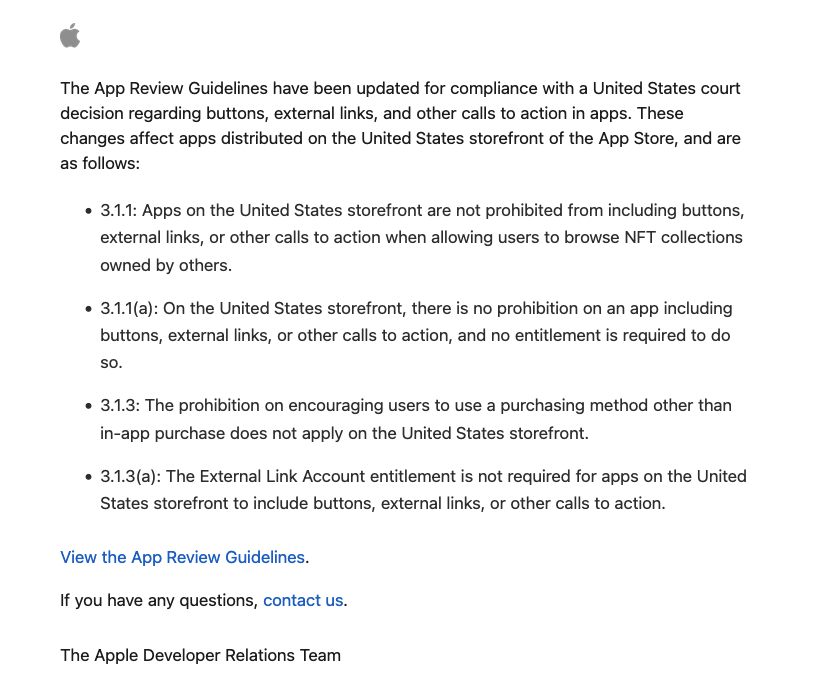
Apple updated its Review Guidelines based on the court ruling.
Various platforms that facilitate payment processing via the App Store, such as RevenueCat, immediately reacted by launching and promoting new capabilities that allow for easy integration of alternative payment methods in the app:
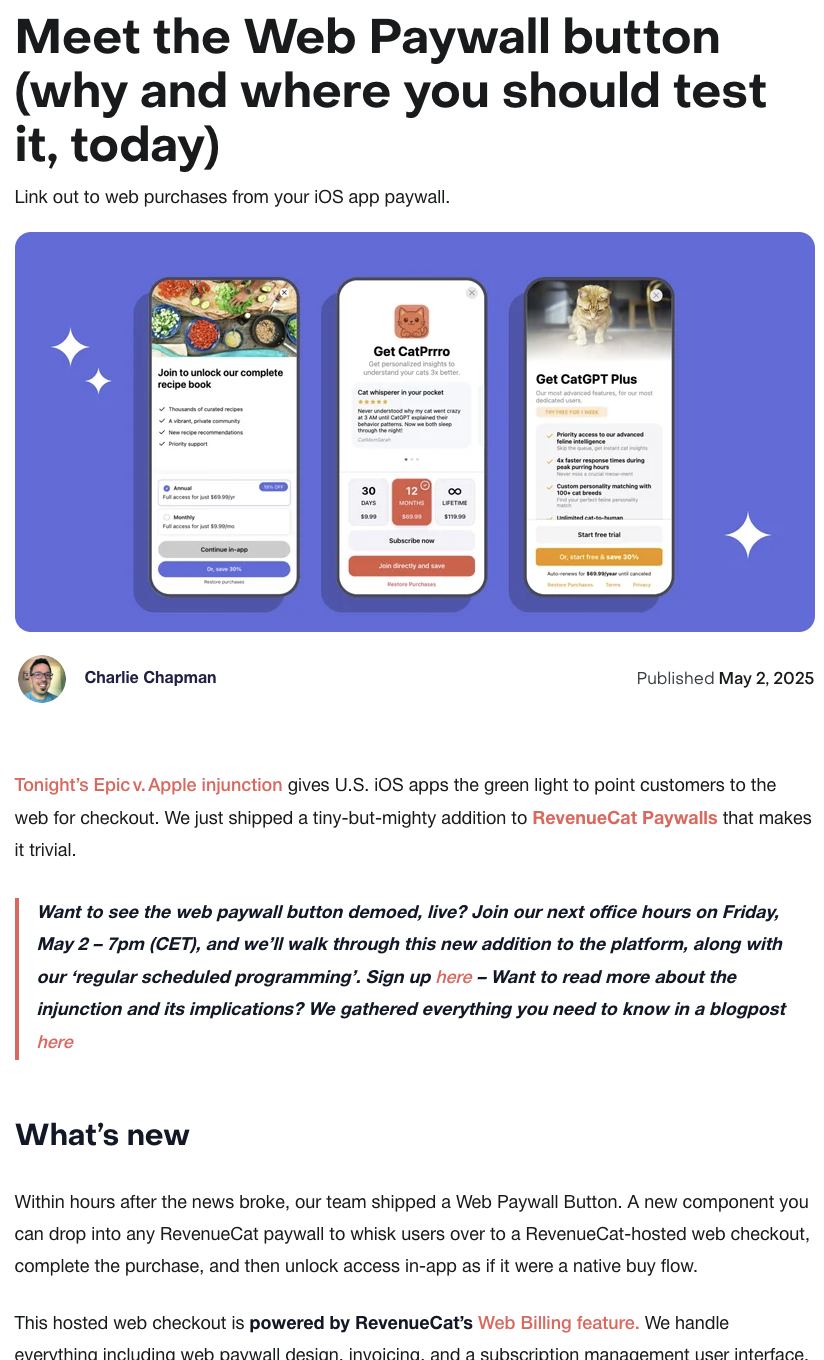
Now it seems like only a matter of time until big players start experimenting with alternative payment methods.
While Epic Games versus Apple has had more eyes on it — mostly because in the US, iOS devices constitute the majority of mobile apps revenue — Epic Games also filed a lawsuit against Google.
The initial verdict on 11 December 2023 ruled in favour of Epic Games. Google appealed the verdict and has been able to maintain its current practices (that is, no alternative payment methods) until the verdict is resolved.
The case isn’t fully resolved as of today, however, given the Apple versus Epic Games ruling and the law of precedent, it’s very likely that the final decision will be similar.
The ruling opens a new way to monetize mobile products. Now, app developers have three options:
The biggest advantage of using alternative payment methods (e.g., redirecting users to an external payment form, collecting CC details individually, etc.) is the omission of 30 percent commission from Apple. Although other payment methods do have provision systems, they’re significantly lower than Apple’s cut.
Furthermore, it gives developers more control over the data they collect and how they handle payments and premium access control.
For example, instead of relying on Apple’s built in “introductory offer” rules, app developers can exercise more control over what type of user gets what type of price, offer, and terms.
App Store purchases still have their benefits. Letting Apple handle everything related to payment and subscription management is more straightforward than integrating and controlling your own payment and subscription management platform.
The user experience is also more seamless, often allowing users to finish the payment process in two quick steps by using billing details already assigned to App Store accounts.
Whether you should keep using Apple’s payment processing or add alternative payment methods depends on your particular context and capabilities.
However, one thing’s for sure: You have more options for handling payments and subscription management.
Now, you can experiment with different setups (Apple only, alternatives only, or a mix of both) to find the best fit for you. Are you better off with the seamless and easy experience of Apple’s App Store purchases, or are you better off with a higher-friction experience that results in more control and fewer processing fees?
It’s a mix of strategic decisions and experimentation to see what works for you best, but products that have an audience who are willing to go a few extra steps can greatly increase their margins by not paying the very high commissions Apple takes.
Although further appeals would be difficult at this point, it doesn’t mean Apple is going to drop this topic.
If a substantial portion of mobile app developers start moving users to alternative payment methods (by using discounts and other special offers), Apple might be forced to review its monetization strategy and the percent commission it charges to remain a viable and competitive option.
One thing is certain — Apple’s strong grip on the US mobile apps market has significantly weakened. A more competitive environment will likely push Apple to employ new strategies to keep making its buck on App Store products.
Featured image source: IconScout
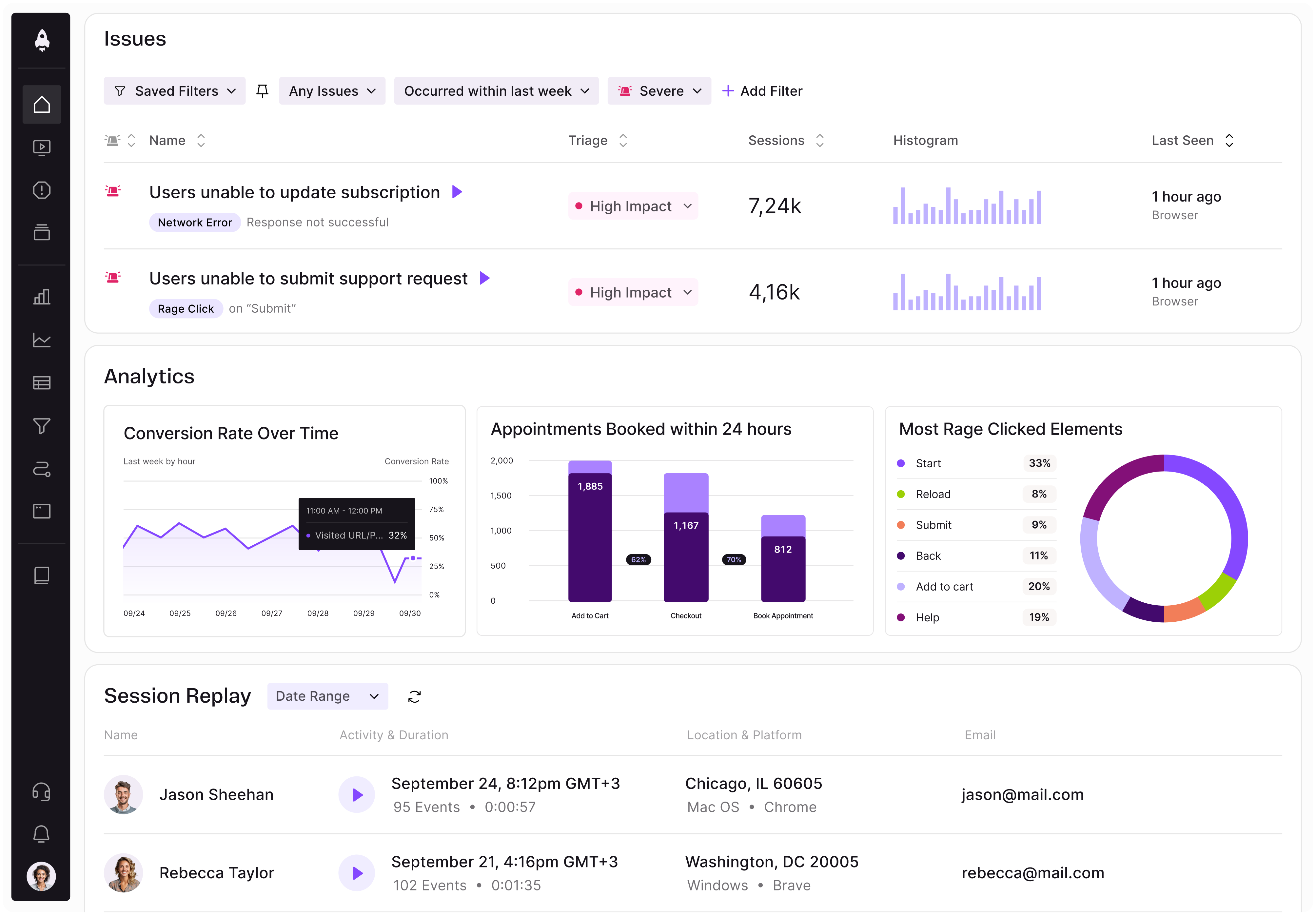
LogRocket identifies friction points in the user experience so you can make informed decisions about product and design changes that must happen to hit your goals.
With LogRocket, you can understand the scope of the issues affecting your product and prioritize the changes that need to be made. LogRocket simplifies workflows by allowing Engineering, Product, UX, and Design teams to work from the same data as you, eliminating any confusion about what needs to be done.
Get your teams on the same page — try LogRocket today.

A practical framework for PMs to use AI in ideation without sacrificing judgment, strategy, or decision quality.
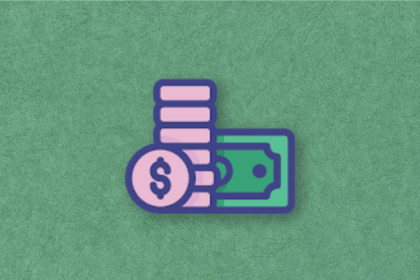
A practical five minute revenue estimation method to help product managers compare ideas, drop low impact features, and prioritize smarter.

A practical guide for PMs who want to stop being bottlenecks, delegate smarter, and lead teams effectively with a clear ownership framework.

Stop letting unreliable data block features. Treat data as inventory to track quality, ownership, and ship with confidence.